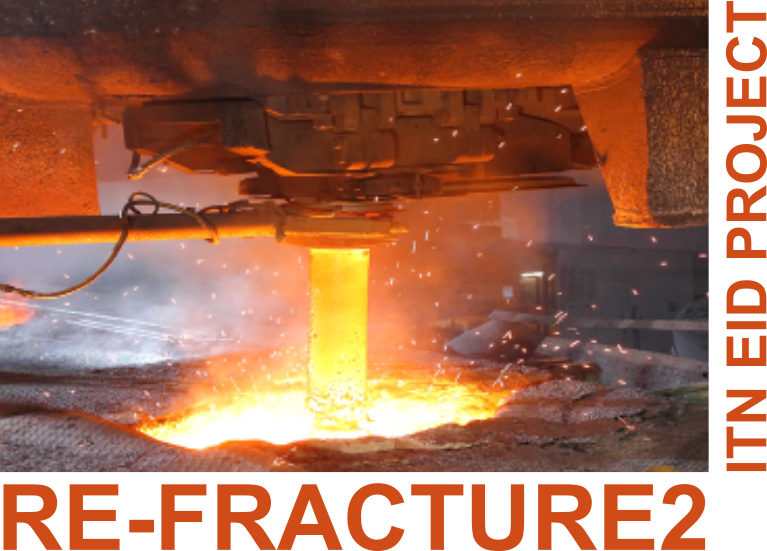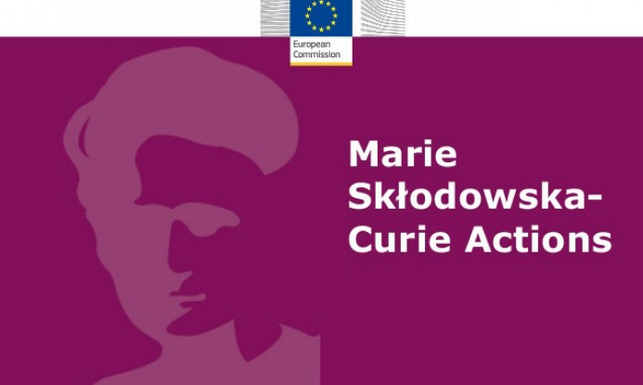Vacancies
OPEN VACANCIESPhD positions:
All vacancies are closed.
CLOSED VACANCIES
PhD positions:
- ESR1: Experimental material characterization of refractory materials at high temperature
The PhD student will develop innovative protocols for experiments aimed at investigating the mechanical properties of materials deformed at room and high temperature. Here, new technologies will be developed, under the supervision of VESUVIUS and UNITN, to provide thermal shocks to material elements and measure the induced damage. Moreover, simple prototypes will be built to highlight the features of the mechanical behaviour under consideration and to show up cyclic and dynamic effects. Since refractory linings of furnace ladles are assembled in masonry-like structures, models of these will be replicated in a laboratory environment to analyse stress distributions and mechanical weaknesses.
Link to full description and application - ESR2: Rate-dependent constitutive modelling of heat resisting materials
In parallel to the experimental activity of ESR1, the PhD student will be taught elasto-visco-plasticity theory and thermomechanics for solids subject to large strain, so that he will be able to develop a new constitutive model for the simulation of the behaviour of ceramic materials subject to high temperature. Model features will be tailored using data from the experiments developed by ESR1, with particular attention given to the coupling effects involving elastic and plastic deformation and thermal laws. Cyclic behaviour and possibly wave propagation will be considered in the model.
Link to full description and application - ESR3: Thermoplastic material instabilities
The PhD student will analyse material instabilities for thermoplastic materials, which are fundamental tools to predict failure initiation, while fracture mechanics dominates at later stages of deformation. The analysis of material instability and crack propagation will be developed in view of the application to the ceramic materials and refractories. Loss of ellipticity of the developed constitutive thermoplastic operator will be addressed together with the perturbative approach for homogeneous states near failure and with techniques developed in fracture mechanics.
Link to full description and application - ESR4: Computational implementation and validation of constitutive models and fracture mechanics applications for heat resistant devices
The PhD student will implement the constitutive models formulated by ESR2 for the high temperature behaviour of refractory materials in routines for finite elements computations. Moreover, open-source FE software will be extended to allow the description of the thermoplastic instabilities analysed by ESR3. CAEMATE and BU will introduce the fellow to the most advanced techniques for efficient solution of highly nonlinear problems and mathematical programming, in order to ensure high computational performance of the developed applications. These will be tested to judge the numerical stability and accuracy. The software will subsequently be employed in the design of innovative systems for foundry industry applications. These systems will be tested by VESUVIUS to verify the optimality of the design and to judge the reliability and safety factors of the elements. The possibility of using photoelastic techniques to analyse these structural elements will also be explored by UNITN and applied to relevant situations.
Link to full description and application - ESR5: Inverse analysis procedure for calibration of constitutive models for mechanical behaviour at high temperature
The PhD student will develop a procedure for the calibration of newly developed constitutive models apt for modelling of material mechanical behaviour at high temperature. The work should include sensitivity analysis through the simulation of tests to optimize testing configurations and develop characterization procedures for further industrial routine use. The designed procedure should synergically combine numerical simulations with experiments (link with ESR1) and mathematical programming in order to build fast computing tool capable of establishing transition from experimentally measured quantities to material properties. In a view of large nonlinearities present in the model, reduced order techniques based on Proper Orthogonal Decomposition will be studied for the acceleration of numerical simulations.
Link to full description and application - ESR6: Topology and geometry optimization of refractory devices
The PhD student will focus on the study, the development and the implementation of Topology Optimization (TO) techniques in order to apply them to the optimization of refractory products. Loads, boundary conditions and constrains will be taken from realistic refractory products, supplied by VESUVIUS, with the main goal to maximize their selected performance. For finding the optimal solution to the formulated nonlinear programming problem, different methods will be tested, including sequential quadratic programming, method of moving asymptotes, as well as derivative free, soft computing techniques based on genetic algorithms. In order to accelerate the conventionally adopted approaches, where highly nonlinear FEM simulations are used, reduced order models will be implemented. Developed novelties are going to be on methodological side and therefore not restricted to the application only on selected products.
Link to full description and application
Contacts
Prof. Andrea Piccolroaz
|
Follow us on our social media! |



